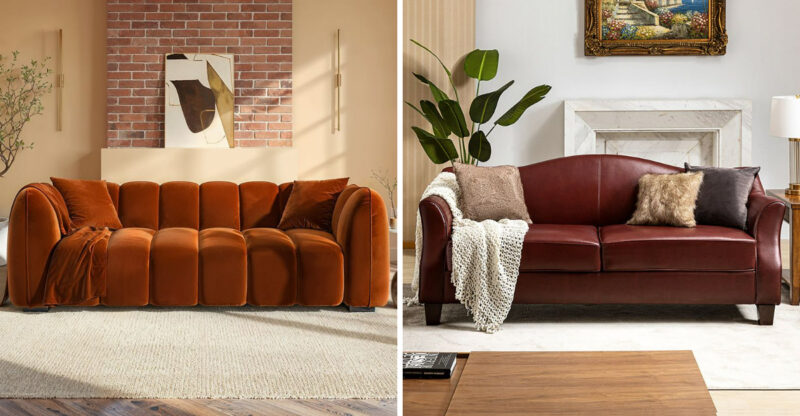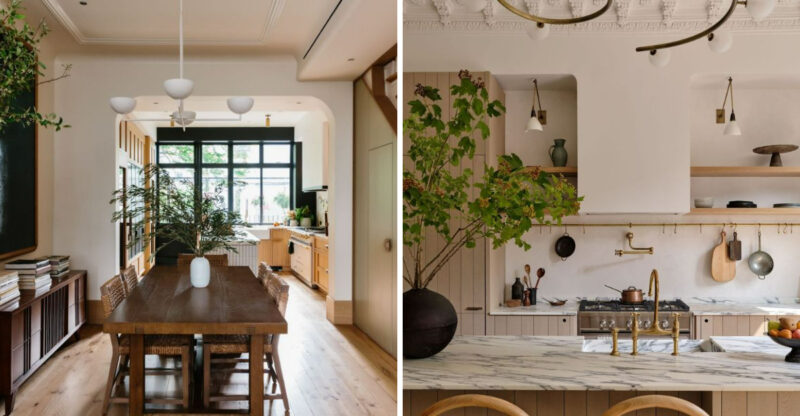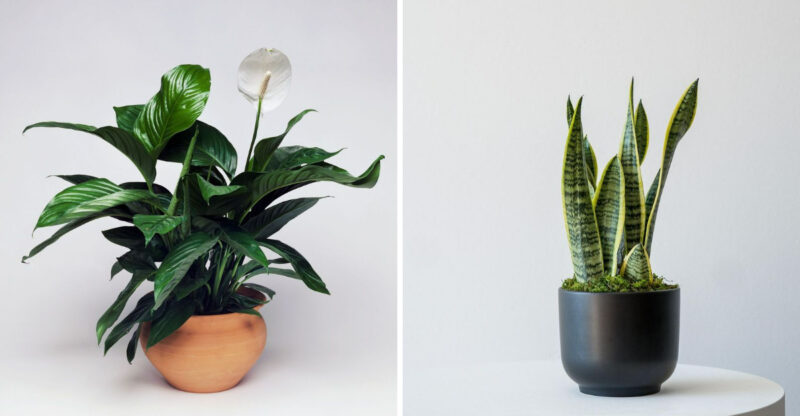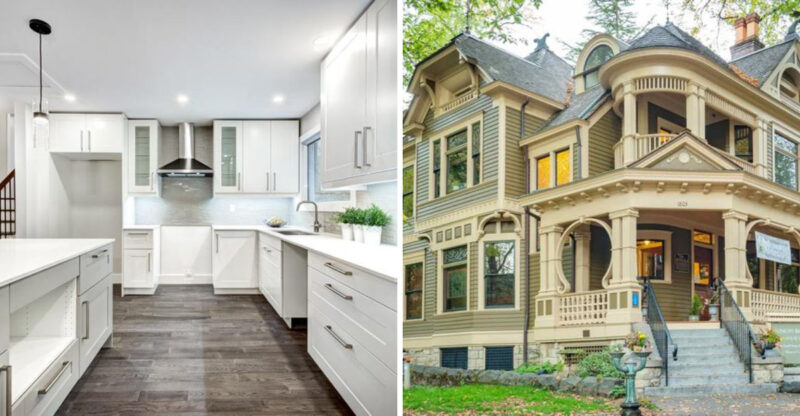16 Things That Are Quietly Disappearing From American Kitchens
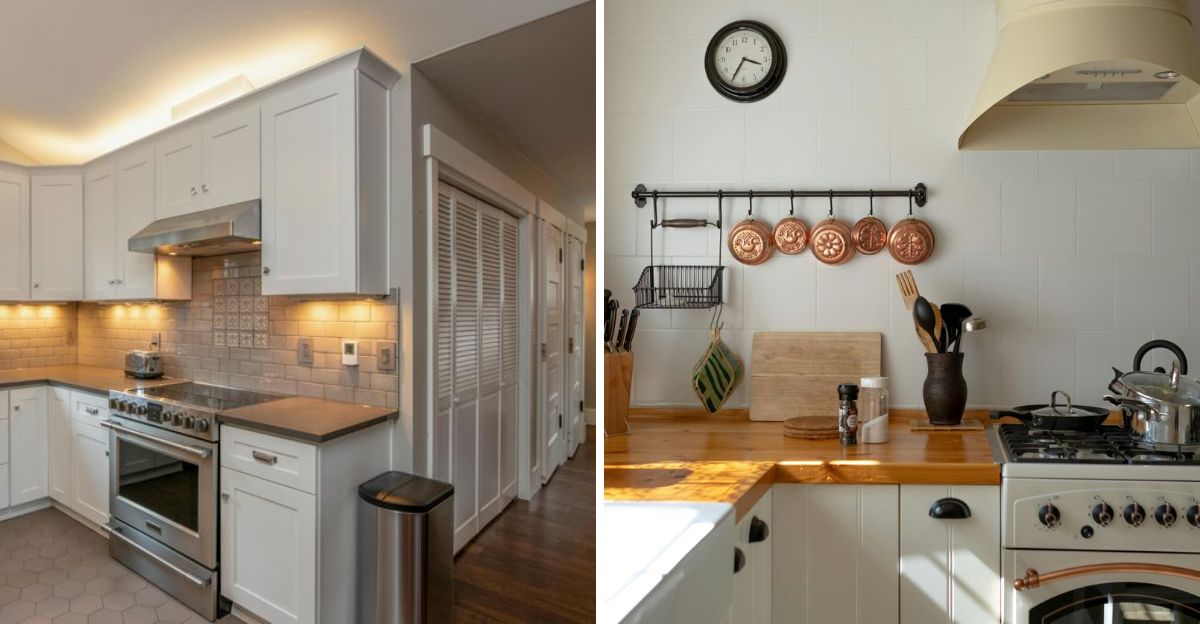
Take a look around your kitchen. Does it feel sleek and modern, or does it still carry touches from decades past? As styles, technology, and everyday habits evolve, certain kitchen features that once felt essential are slowly disappearing from American homes.
From furniture pieces to design details, these changes say a lot about how our lifestyles have shifted. Today, we’ll talk about these items that are quietly fading from kitchens and why they’re being left behind. Trends vary by region and personal taste, so some of these items may still be found in many homes.
1. Formal China Cabinets
Remember when every family proudly displayed their wedding china? Those ornate wooden showcases are becoming relics of a bygone era.
China cabinets once symbolized status and tradition, holding delicate porcelain that only emerged for special occasions. Now minimalism reigns supreme, with open shelving and multipurpose storage taking center stage in modern kitchens.
Younger homeowners simply aren’t collecting formal dinnerware like previous generations, preferring versatile dishware that transitions from everyday use to entertaining.
2. Wooden Spoon Racks
Wooden spoon racks, once proudly displaying an array of utensils, are now a fading memory. These racks embodied the artisanal spirit of home cooking, showcasing the tools of the trade in a functional yet decorative manner.
As kitchens evolve into minimalist spaces, the spoon rack’s disappearance reflects a move towards hidden storage and sleek designs. However, for many, these racks symbolized the heart of the kitchen, a place where cooking was both art and necessity.
Did you know? The tradition of displaying wooden spoons dates back to medieval times, where they were considered a status symbol.
3. Landline Phones On The Wall
That stretched-out cord you’d twist while chatting with friends is officially extinct in most homes. Wall-mounted kitchen phones were once the communication hub of the household.
Families would gather around the single household phone, taking messages for each other and negotiating time limits. The kitchen location was strategic, allowing multitasking while cooking or cleaning.
Smartphones have rendered these fixtures obsolete, though some designers note a touch of nostalgia when clients spot vintage phones in antique shops.
4. Recipe Card Boxes
The recipe card box, once the keeper of family secrets and culinary heritage, is becoming a relic of the past. These boxes, filled with handwritten recipes, told the story of generations and cherished meals.
With the digital age offering cloud storage and online recipes, the tactile joy of sifting through cards is fading. Yet, for those who treasure tradition, the recipe card box remains a symbol of shared love and legacy.
Fun fact: Recipe cards became popular in the 20th century, especially during the Great Depression, when sharing recipes was a way to stretch budgets and foster community.
5. Knife Blocks
Those wooden blocks hogging counter space are getting the chop in contemporary kitchens. For decades, knife blocks served as both storage solution and status symbol for home cooks.
Knife blocks collect crumbs and are difficult to clean properly, creating hygiene concerns that modern homeowners prefer to avoid. The current trend favors magnetic strips that display knives like culinary artwork while keeping counters clear.
Drawer inserts with dedicated knife slots are another popular alternative, protecting blades while maintaining the clean, minimalist aesthetic that defines today’s kitchen design.
6. Manual Coffee Grinders
For true coffee enthusiasts, the morning ritual of grinding fresh beans with a manual grinder was unmatched. The rich aroma that filled the kitchen was an invigorating start to the day.
As electric grinders and pre-ground coffee became more prevalent, the tactile experience of hand-grinding has slowly faded. These manual grinders, often beautifully crafted, now serve more as decorative items or collectors’ pieces.
Their disappearance marks a shift towards speed and efficiency, overshadowing the slower-paced, sensory-rich brewing experience of the past.
7. Ceramic Butter Dishes
In the past, ceramic butter dishes adorned with intricate designs were a common sight on kitchen tables. These charming pieces not only kept the butter soft and spreadable but also added a touch of elegance to meals.
While they still exist, their prevalence is diminishing as more people opt for pre-packaged butter or margarine with resealable lids. Convenience has taken precedence over tradition, leading to fewer ceramic pieces being used regularly.
Yet, for those who cherish the artful presentation of food, these dishes represent a bygone era of leisurely breakfasts and afternoon teas.
8. Popcorn Ceilings
Though not exclusive to kitchens, these textured eyesores are being scraped away across America. Popcorn ceilings (also called acoustic or cottage cheese ceilings) were initially popular for hiding imperfections and dampening sound.
The kitchen environment proved particularly problematic for this texture, cooking grease and moisture caused discoloration and made cleaning nearly impossible. Many older installations contained asbestos, adding health concerns to aesthetic objections.
Smooth ceilings or architectural details like coffered designs and beadboard have become the preferred choices for modern kitchen renovations.
9. Cast Iron Skillets
In many households, the trusty cast iron skillet was once a staple, cherished for its ability to retain heat and its versatility in cooking a variety of dishes. These skillets, passed down through generations, hold a special place in culinary history.
Yet, as non-stick and stainless steel options dominate the market, the presence of cast iron skillets is fading. Their heavy weight and need for regular seasoning appear daunting in today’s fast-paced world.
Despite their decline, these skillets still represent a piece of heritage, often regaled with stories from family kitchens. Search for them in vintage shops or family attics to rediscover their charm.
10. Over-The-Range Microwaves
That space-saving appliance placement is falling out of favor with designers and homeowners alike. Over-the-range microwaves gained popularity by combining two functions: cooking and ventilation.
Unfortunately, they perform neither function particularly well. Their ventilation capabilities pale compared to dedicated range hoods, and their height makes them awkward and potentially dangerous when handling hot foods.
Today’s kitchens feature microwaves in more accessible locations, built into islands, lower cabinetry, or dedicated microwave drawers that don’t require reaching over hot cooktops.
11. Spice Racks
Once a staple in every kitchen, spice racks are slowly being phased out in favor of streamlined cabinets and drawers. In the past, spice racks proudly displayed an array of spices, easily accessible and visually appealing.
Modern kitchens now favor built-in storage solutions that hide these culinary essentials behind closed doors. This change reflects a broader trend towards minimalism and clean, uncluttered spaces.
Despite their decline, spice racks still hold a certain charm for those who appreciate the visual appeal of colorful spices and the convenience of having them within arm’s reach while cooking.
12. Patterned Wallpaper
Those busy floral prints and fruit motifs that dominated kitchen walls are being stripped away. Kitchen wallpaper reached its popularity peak in the 1980s and 1990s with borders, coordinating patterns, and themed designs.
The kitchen environment proved challenging for wallpaper durability. Steam, grease, and frequent temperature changes caused peeling and discoloration that required regular replacement.
Today’s kitchens feature clean paint in neutral tones, subtle tile backsplashes, or statement walls with washable paint that can withstand the demands of cooking areas while maintaining a timeless aesthetic.
13. Tea Kettles
There was a time when the gentle whistle of a tea kettle could be heard in almost every American kitchen, signaling a moment of pause and relaxation. These kettles, often crafted from stainless steel or enamel, were both functional and decorative, reflecting the personality of the homeowner.
Today, the convenience of electric kettles and single-serve coffee makers has relegated the traditional tea kettle to the back of the cupboard or to the shelves of antique stores. Despite this shift, the charm of a classic tea kettle remains unparalleled, evoking memories of a slower, more intentional pace of life.
Many still cherish the ritual of filling, boiling, and pouring from a traditional kettle, making it a symbol of comfort and simplicity. The disappearance of these kettles marks a subtle shift in how modern kitchens are adapting to a fast-paced world.
14. Curtain Valances
Those fabric frills that once adorned the tops of kitchen windows are being taken down across America. Valances reached peak popularity in the 1980s and 1990s, often matching tablecloths or chair cushions in coordinated kitchen décor schemes.
Fabric window treatments in kitchens collect cooking residue and require frequent washing to prevent odors and discoloration. The fussy, ornate aesthetic they represent has given way to cleaner lines and simpler window treatments.
Modern kitchens favor minimal window coverings like simple roller shades, streamlined blinds, or often no treatment at all for unobstructed natural light.
15. Hanging Pot Racks
Those ceiling-mounted displays of copper and stainless steel cookware are coming down in many homes. Hanging pot racks once served as both practical storage and culinary status symbol.
While professional chefs still appreciate the convenience of overhead pot storage, average homeowners have discovered the downside, dust collection. Pots stored overhead require cleaning before each use, negating any time-saving benefits.
Contemporary kitchen designs favor deep drawers or specialized cabinet organizers that keep cookware accessible but protected from airborne kitchen grime.
16. Trash Compactors
When was the last time you saw one of these built-in garbage crushers? Trash compactors enjoyed brief popularity as space-saving solutions for waste management.
The reality proved less convenient than the concept. Compacted trash was extremely heavy, difficult to remove, and often leaked unpleasant liquids. As recycling became more common, the single-stream approach of compactors became impractical.
Nowadays, kitchens feature multi-bin pull-out systems that separate recycling, compost, and landfill waste, reflecting modern environmental consciousness rather than just space efficiency.


